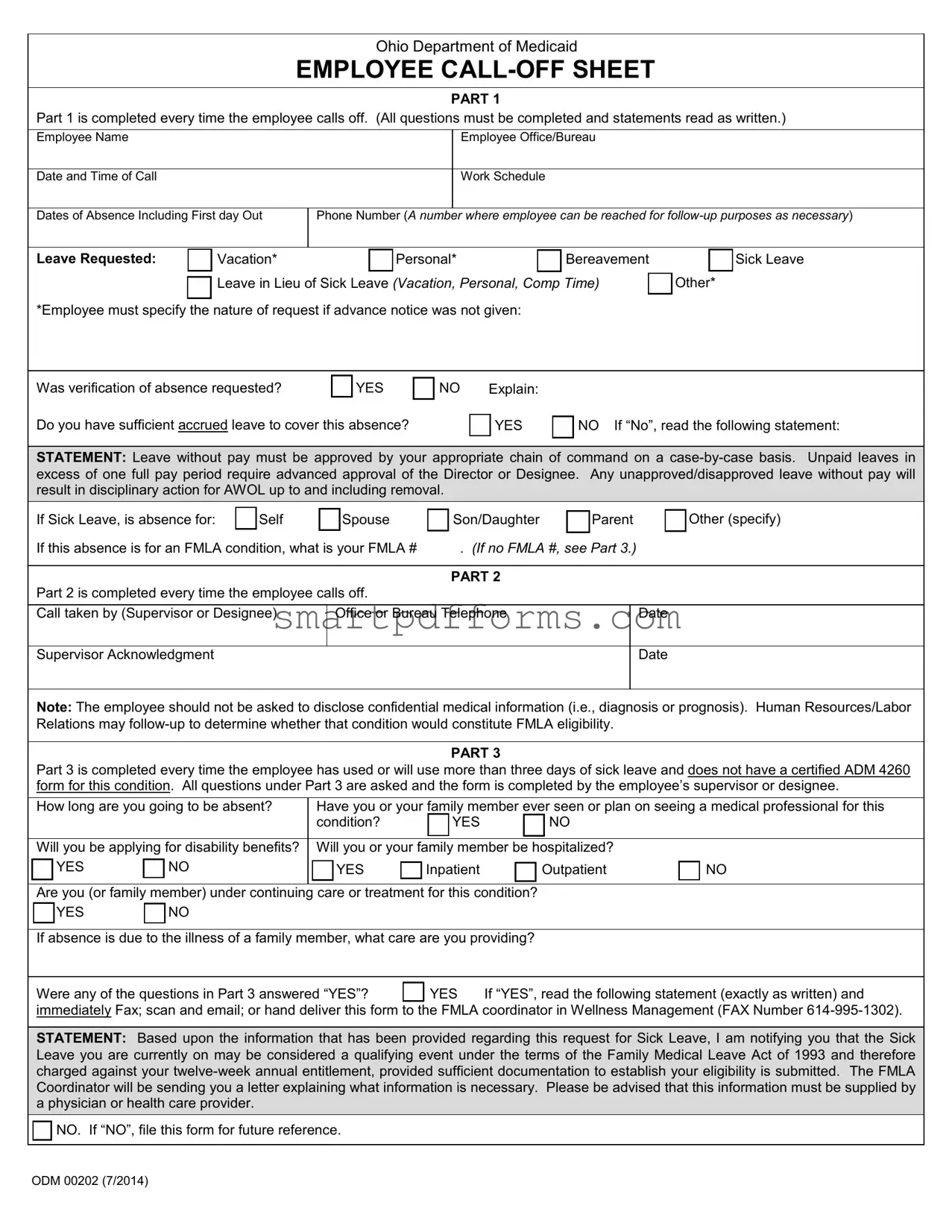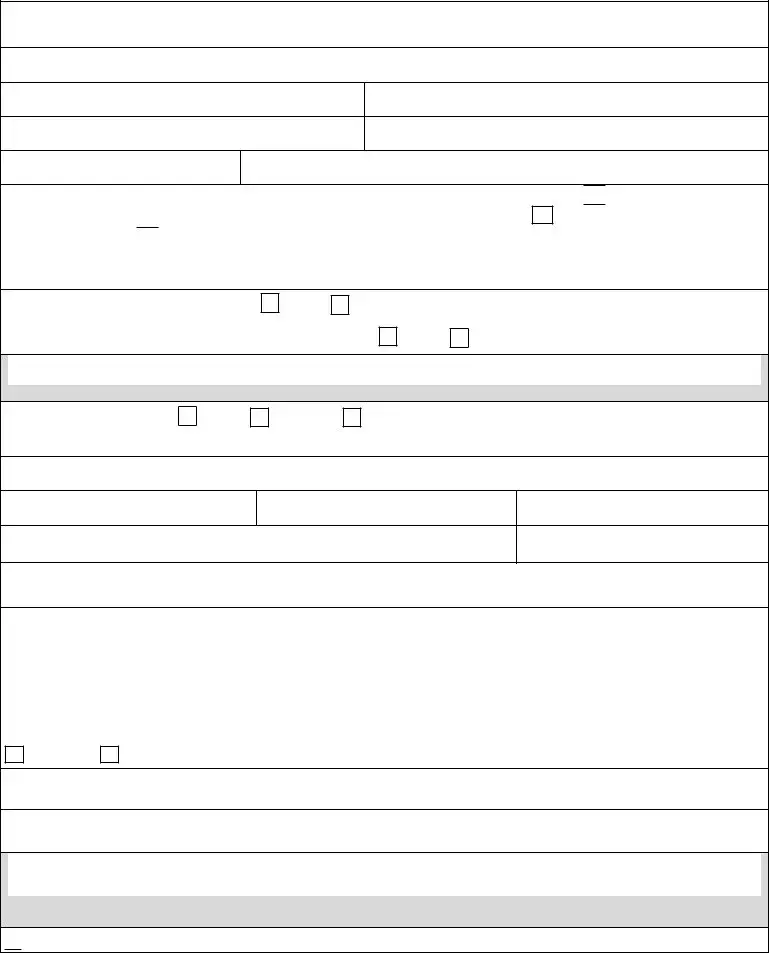Ohio Department of Medicaid
EMPLOYEE CALL-OFF SHEET
PART 1
Part 1 is completed every time the employee calls off. (All questions must be completed and statements read as written.)
Dates of Absence Including First day Out
Phone Number (A number where employee can be reached for follow-up purposes as necessary)
Leave Requested: |
|
Vacation* |
|
Personal* |
|
Bereavement |

 Leave in Lieu of Sick Leave (Vacation, Personal, Comp Time)
Leave in Lieu of Sick Leave (Vacation, Personal, Comp Time)
*Employee must specify the nature of request if advance notice was not given:

 Sick Leave Other*
Sick Leave Other*
Was verification of absence requested? |
YES |
Do you have sufficient accrued leave to cover this absence?
NO If “No”, read the following statement:
STATEMENT: Leave without pay must be approved by your appropriate chain of command on a case-by-case basis. Unpaid leaves in excess of one full pay period require advanced approval of the Director or Designee. Any unapproved/disapproved leave without pay will result in disciplinary action for AWOL up to and including removal.
If Sick Leave, is absence for:
Son/Daughter |
|
Parent |
|
Other (specify) |
If this absence is for an FMLA condition, what is your FMLA # |
. (If no FMLA #, see Part 3.) |
PART 2
Part 2 is completed every time the employee calls off.
Call taken by (Supervisor or Designee)
Office or Bureau Telephone
Supervisor Acknowledgment
Note: The employee should not be asked to disclose confidential medical information (i.e., diagnosis or prognosis). Human Resources/Labor Relations may follow-up to determine whether that condition would constitute FMLA eligibility.
PART 3
Part 3 is completed every time the employee has used or will use more than three days of sick leave and does not have a certified ADM 4260 form for this condition. All questions under Part 3 are asked and the form is completed by the employee’s supervisor or designee.
|
How long are you going to be absent? |
|
Have you or your family member ever seen or plan on seeing a medical professional for this |
|
|
|
|
|
|
condition? |
|
|
|
YES |
|
|
NO |
|
|
|
|
|
|
|
|
|
|
|
|
|
|
|
|
|
|
|
|
|
|
|
|
|
|
|
|
|
|
|
|
|
|
|
|
|
|
|
Will you be applying for disability benefits? |
|
Will you or your family member be hospitalized? |
|
|
|
|
YES |
|
NO |
|
|
YES |
|
Inpatient |
|
|
Outpatient |
|
NO |
|
|
|
|
|
|
|
|
|
Are you (or family member) under continuing care or treatment for this condition?
If absence is due to the illness of a family member, what care are you providing?
|
Were any of the questions in Part 3 answered “YES”? |
|
YES |
If “YES”, read the following statement (exactly as written) and |
|
|
immediately Fax; scan and email; or hand deliver this form to the FMLA coordinator in Wellness Management (FAX Number 614-995-1302). |
STATEMENT: Based upon the information that has been provided regarding this request for Sick Leave, I am notifying you that the Sick Leave you are currently on may be considered a qualifying event under the terms of the Family Medical Leave Act of 1993 and therefore charged against your twelve-week annual entitlement, provided sufficient documentation to establish your eligibility is submitted. The FMLA Coordinator will be sending you a letter explaining what information is necessary. Please be advised that this information must be supplied by a physician or health care provider.

 NO. If “NO”, file this form for future reference.
NO. If “NO”, file this form for future reference.





 Sick Leave Other*
Sick Leave Other*
 NO. If “NO”, file this form for future reference.
NO. If “NO”, file this form for future reference.